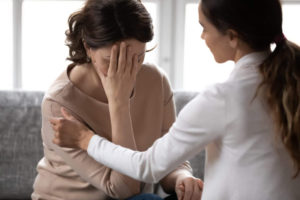What is seasonal depression and what are the signs and symptoms?
Winter can be a tough time for many but feeling down may be more than just the “winter blues.” Seasonal depression, also known as seasonal affective disorder, is a form of depression that reoccurs around the same time each year and it one of the five most common types of depression. Those who suffer from seasonal depression can experience depressive episodes in the colder months of the year, usually beginning in the fall and ending in the spring. According to the Cleveland Clinic, these depressive episodes are caused by the lack of sunlight during the fall and winter. Seasonal depression likely affects half a million Americans each year, but often goes undiagnosed. As the colder months approach, it is important to know the signs of seasonal depression and how to cope.
Signs and Symptoms
It is important to be aware of the possible signs and symptoms of seasonal depression. These may include:
- Fatigue
- Feelings of sadness
- Anxiety
- Social withdrawal
- Loss of interest in activities or hobbies
- Weight gain and cravings for carbohydrates
- Sleep problems, including oversleeping
- Problems with concentration
Coping with Seasonal Depression:
If you are experiencing any of the symptoms described above, it is important to speak with your healthcare provider as soon as possible. They may recommend treatment in the form of medication or therapy or offer other ways they can help. More ways to cope with seasonal depression can be:
- Getting as much exposure to natural light as possible
- Exercising regularly
- Reaching out to friends and family
- Eat balanced meals that will boost your serotonin
If you want to join a paid depression research study, click here to learn more.








